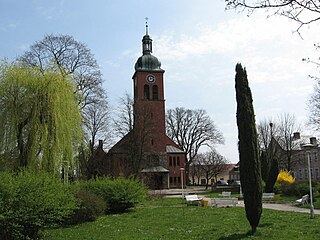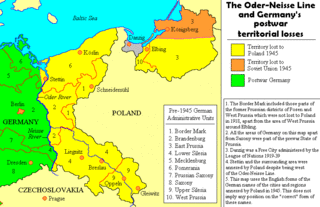See also
- PKO Bank Polski, a commercial bank
Bank of Poland may refer to:

The economy of Poland is an industrialised, mixed economy with a developed market that serves as the sixth-largest in the European Union by nominal GDP and fifth-largest by GDP (PPP). Poland boasts the extensive public services characteristic of most developed economies. Since 1988, Poland has pursued a policy of economic liberalisation but retained an advanced public welfare system. This includes universal free public healthcare and education, extensive provisions of free public childcare, and parental leave. The country is considered by many to be a successful post-communist state. It is classified as a high-income economy by the World Bank, ranking 20th worldwide in terms of GDP (PPP), 21st in terms of GDP (nominal), and 21st in the 2023 Economic Complexity Index.

The Polish złoty is the official currency and legal tender of Poland. It is subdivided into 100 grosz (gr). It is the most traded currency in Central and Eastern Europe and ranks 21st most-traded in the foreign exchange market.

Polish people, or Poles, are a West Slavic ethnic group and nation who share a common history, culture, the Polish language and are identified with the country of Poland in Central Europe. The preamble to the Constitution of the Republic of Poland defines the Polish nation as comprising all the citizens of Poland, regardless of heritage or ethnicity. The majority of Poles adhere to Roman Catholicism.
The interwar Communist Party of Poland was a communist party active in Poland during the Second Polish Republic. It resulted from a December 1918 merger of the Social Democracy of the Kingdom of Poland and Lithuania (SDKPiL) and the Polish Socialist Party – Left into the Communist Workers' Party of Poland. The communists were a small force in Polish politics.

The history of Poland from 1939 to 1945 encompasses primarily the period from the invasion of Poland by Nazi Germany and the Soviet Union to the end of World War II. Following the German–Soviet non-aggression pact, Poland was invaded by Nazi Germany on 1 September 1939 and by the Soviet Union on 17 September. The campaigns ended in early October with Germany and the Soviet Union dividing and annexing the whole of Poland. After the Axis attack on the Soviet Union in the summer of 1941, the entirety of Poland was occupied by Germany, which proceeded to advance its racial and genocidal policies across Poland.

Białystok Voivodeship was a unit of administrative division and local government in Poland from 1975 to 1998, when it was superseded by the Podlaskie Voivodeship. Its capital city was Białystok. It was formed in 1975 from part of the existing Białystok Voivodeship. The region was 10,055 km2 (3,882 sq mi), and its population in 1994, about 700 000 inhabitants. It was divided into 20 cities and 50 municipalities. It bordered with four Voivodeships: Suwałki, Łomża, Siedlce and Biała Podlaska and until 1991 with the Soviet Union, and later with Belarus.

The Polish Workers' Party was a communist party in Poland from 1942 to 1948. It was founded as a reconstitution of the Communist Party of Poland (KPP) and merged with the Polish Socialist Party (PPS) in 1948 to form the Polish United Workers' Party (PZPR). From the end of World War II the PPR led Poland, with the Soviet Union exercising moderate influence. During the PPR years, the centers of opposition activity were largely diminished, and a socialist system was established in the country.

Zakrzewo is a village in Złotów County, Greater Poland Voivodeship, in north-central Poland. It is the seat of the gmina called Gmina Zakrzewo. It lies approximately 10 kilometres (6 mi) north-east of Złotów and 114 km (71 mi) north of the regional capital Poznań.

At the end of World War II, Poland underwent major changes to the location of its international border. In 1945, after the defeat of Nazi Germany, the Oder–Neisse line became its western border, resulting in gaining the Recovered Territories from Germany. The Curzon Line became its eastern border, resulting in the loss of the Eastern Borderlands to the Soviet Union.

Stanisław Wawrzyniec Staszic was a leading figure in the Polish Enlightenment: a Catholic priest, philosopher, geologist, writer, poet, translator and statesman. A physiocrat, monist, pan-Slavist and laissez-fairist, he supported many reforms in Poland. He is particularly remembered for his political writings during the "Great (Four-Year) Sejm" (1788–92) and for his large support towards the Constitution of 3 May 1791, adopted by that Sejm.

The Narodowy Bank Polski, often abbreviated to NBP, is the central bank of Poland, founded in 1945. It controls the issuing of Poland's currency, the Polish złoty. The bank is headquartered in Warsaw, and has branches in 16 major Polish cities. The NBP represents Poland in the European System of Central Banks, an EU organization. The bank doesn't translate its name to English and uses its Polish name in all English communications.

Powszechna Kasa Oszczędności Bank Polski Spółka Akcyjna is a Polish multinational banking and financial services company headquartered in Warsaw, Poland. It is among the largest financial institutions in Poland, and is also one of the largest financial groups in Central and Eastern Europe, with 1,145 branches located in Poland and abroad and a market capitalization of PLN 52 billion as of 2018.

Union of Polish Patriots was a political body created by Polish communists in the Soviet Union in 1943. The ZPP, unofficially controlled and directed by Joseph Stalin, became one of the founding structures of the Soviet-controlled communist government that after World War II took power in Poland.

Barcin is a town in central Poland, in Kuyavian-Pomeranian Voivodeship, in Żnin County. As of December 2021, the town has a population of 7,255.

Rzgów is a town in Łódź East County, Łódź Voivodeship, in central Poland, with 3,382 inhabitants (2020). It is situated on the Ner River within the Sieradz Land. The town is a member of Cittaslow.
Camp of Great Poland was a far-right, nationalist political organization of National Democracy in interwar Poland.

The National Radical Camp was an ultranationalist and antisemitic political movement which existed in the pre-World War II Second Polish Republic, and an illegal Polish anti-communist, and nationalist political party formed on 14 April 1934 mostly by the youth radicals who left the National Party of the National Democracy movement.
Bank of Issue in Poland was a bank created by Nazi Germany in the General Government in 1940.

The building of the National Bank of Poland is a historical edifice, located at Jagiellońska street 8, in downtown Bydgoszcz, Poland.

Bank Polski SA, full name Bank Polski Spółka Akcyjna, sometimes referred to as the "Second Bank of Poland" to distinguish it from its 19th-century namesake, was the central bank of the Second Polish Republic. It was founded in 1924 and operated until the invasion of Poland in 1939, when it was replaced by the Bank of Issue in Poland in the General Government and elsewhere by the Nazi German Reichsbank and Soviet Gosbank.